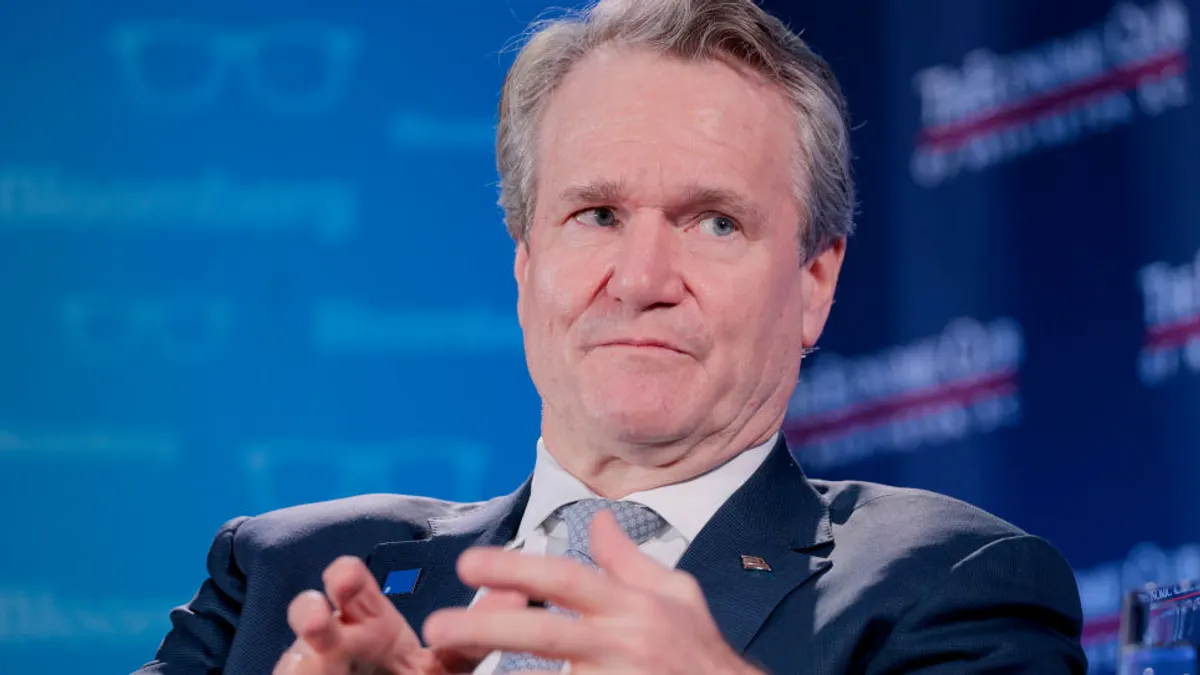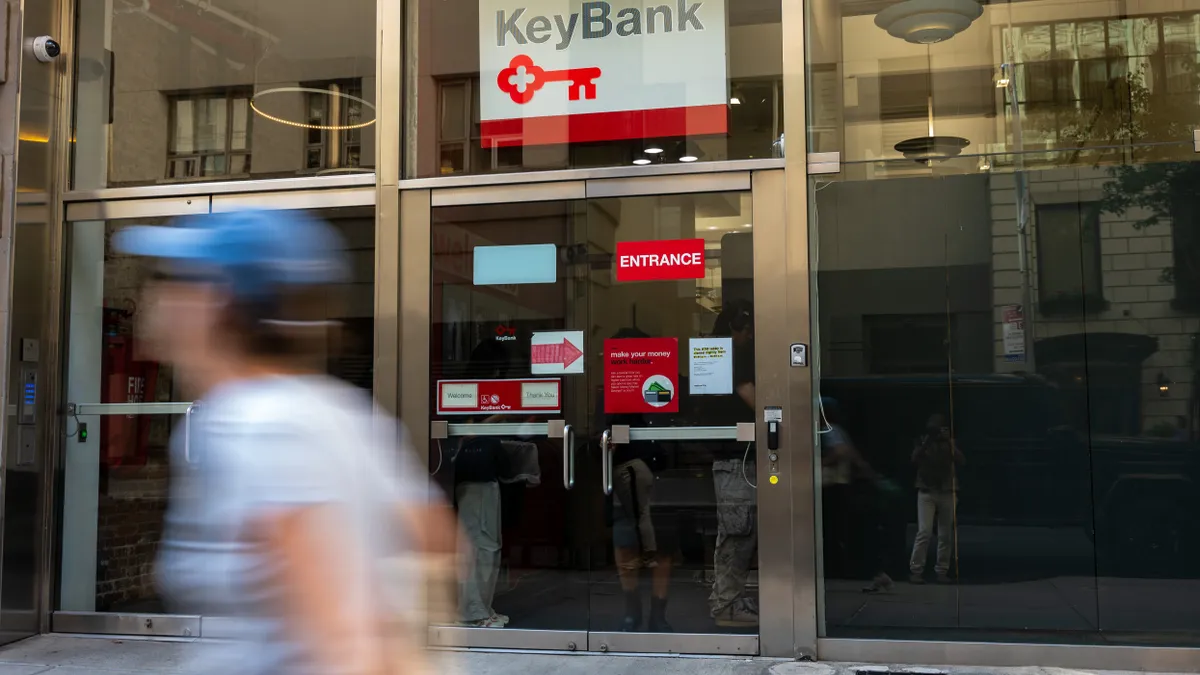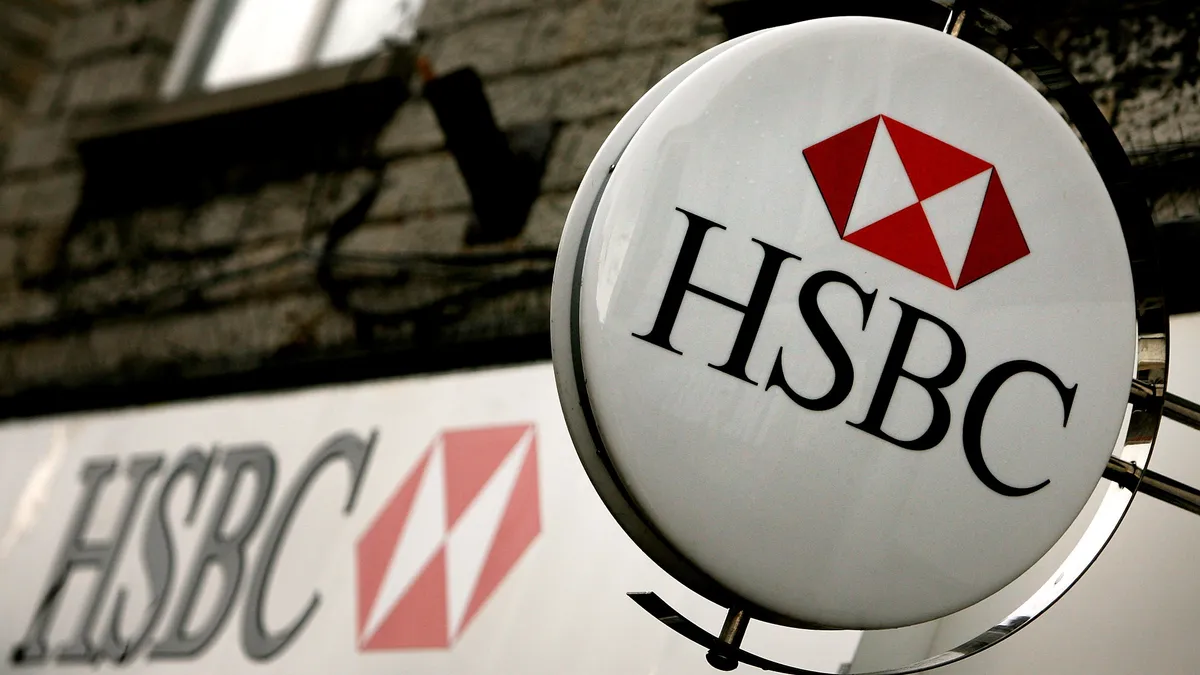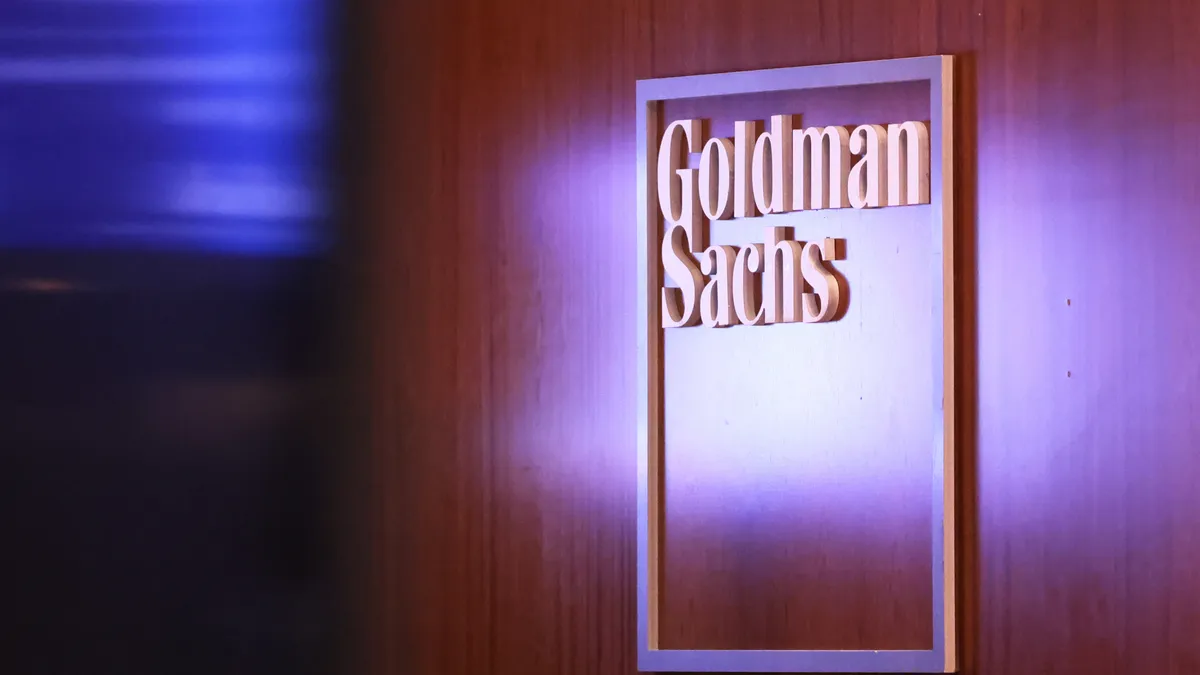Bank of America CEO Brian Moynihan is pushing for industry regulation that’s built to last, as Trump-appointed banking agencies revamp rules and requirements.
Regulation was one of a number of topics Moynihan addressed during a conversation Tuesday with American Bankers Association CEO Rob Nichols at the trade group’s annual convention in Charlotte, North Carolina.
The CEO of the second-biggest U.S. bank also touched on serving customers affected by the government shutdown, industry considerations regarding stablecoins, changes to Bank Secrecy Act requirements and cyber resiliency.
1. Regulatory ‘permanence’
Regulatory reaction to the 2007-08 financial crisis was “appropriate,” Moynihan said, but “it needed to stop at some point.”
“The wheels kept turning and you’re saying, ‘Wait, I thought we solved that problem,’” he said.
The pendulum swing of regulation or deregulation makes it challenging for bank CEOs to run their companies over the long term, he added. “We just want it fair, down the middle, appropriate, and then get it baked in, so it doesn’t keep going like this, because that’s hard to adjust to.”
He applauded efforts by current banking agency heads to focus on material financial risks.
“We shouldn't be talking about ‘could,’ we should be talking about ‘is,’” Moynihan said. “So, this could be a problem, this could be a violation; no, it is a problem or it is a violation. And that's what we ought to be focused on.”
As regulators pursue regulatory changes, it’s crucial that they “can’t be taken apart easily.”
The ABA is “laser focused” on rule “permanence,” Nichols replied.
“If they just issue policy statements or things like that, the next [administration’s regulators] then can just throw them all away,” Moynihan said. “They have to get the rules baked in, with a rulemaking process, so it’s a final rule.”
“Once you do that, to unwind it’s a lot different than if it’s just somebody who said, ‘Let’s just try this for a while,’” Moynihan said.
Trade groups “have to just be a bear on making sure we get this thing baked in and solidified,” Moynihan told Nichols.
2. Serving shutdown-affected customers
As the bank’s Washington-area customers who are federal employees grapple with the ongoing government shutdown, “we handle them just like any other storm or fire or anything else,” Moynihan said.
“We basically say, ‘Look, what's important to you?’ No fees, waivers on payments, deferrals, etc., forbearance, all those types of things, so that that customer can make it through this trough and to get back on their feet, without having to worry about their day-to-day loan payments or their operational accounts going negative and having overdraft fees.”
“I'd like to think this is unusual, but we’ve gone through this,” the CEO added. “We have a playbook, and we just go apply the playbook across all the different dimensions we're in.”
3. Stablecoin considerations
Following this year’s passage of the Genius Act, which establishes a regulatory framework for stablecoin issuers, executives at Charlotte-based BofA can see business cases for payment stablecoins, such as with cross-border payments and the ability to move money over the weekend, he said.
Moynihan said banks have work to do to figure out how to respond to stablecoins, if there’s demand.
“Our No. 1 competitive position as an industry is to have the operational accounts for consumers and businesses across America, and we’ve got to make sure that we don’t see a migration of that out,” he said. Yet, “you also have to be able to have a capable product to meet the customer demand.”
Moynihan expects “you'll see that work by the industry, I believe – like we did with Zelle, and everybody has to have access to it.
“We're trying to make sure we have payment networks that work like the wire system, like the ACH system – they have to work for everybody,” he said.
To some extent, it’s “on the larger banks to get this figured out,” he said, and have products that are made available to all.
Trade groups have expressed concern about deposit loss and want Congress to ensure there are limits on the yields stablecoins can offer consumers. Deposit flight isn’t much of an issue right now, “but if it becomes a problem, it’s going to be hard to put the genie back in the bottle,” Moynihan said, pointing to money market mutual funds as an example.
If an entity takes customers’ money, “they have to have a full bank charter,” he said. “And then you want them to use that money to actually make loans, not just to stick it in the ground, and that’s the piece, I think, that has to be thought through here.”
4. BSA/AML
Moynihan voiced support for raising reporting thresholds for currency transaction reports and suspicious activity reports under the Bank Secrecy Act.
Senate Banking Committee Republicans introduced a bill Tuesday that seeks to do that, calling “outdated” the reporting requirements that haven’t been revised since 1970. The legislation would raise the CTR threshold from $10,000 to $30,000, and the SAR thresholds from $2,000 or $5,000, to $3,000 and $10,000. It would also require the Treasury Department to adjust those amounts every five years accounting for inflation.
The BofA CEO also noted the current “tension” between regulators and law enforcement on the matter: “The focus of the regulatory agencies is just file, file, file, versus the law enforcement agencies want good information.”
“We’ve got to get that balance right,” he said.
Moynihan also highlighted how the bank is applying artificial intelligence in that area, to handle some routine work. “It can write the SARs, and it can grade itself on writing the SARs, it can grade the human beings on writing the SARs,” he said.
5. Cybersecurity, resiliency
Amid AI buzz and other attention-grabbing issues, Moynihan urged CEOs to remain vigilant on cybersecurity. “It only takes one of these instances to get out in the paper,” he noted.
“When you talk cyber, talk resiliency – how can I get back up? How can I stay up? How can I never be down? Those are things you have to be at, because you’re going to have people come after you,” Moynihan said.
About a decade ago, he said, the bank switched from “pure protection” to “assume that it doesn’t work, what do you do next? And that's the key.”





















